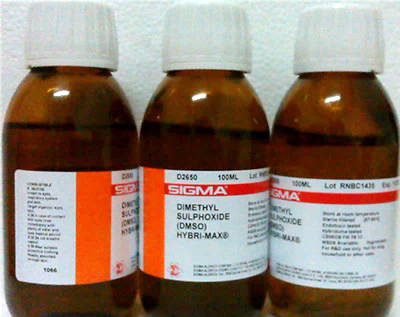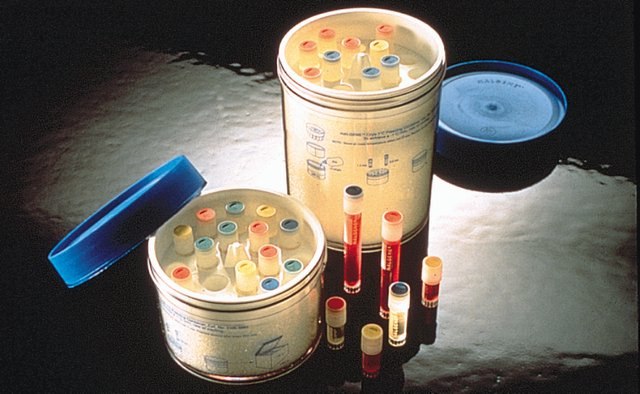Cryopreservation of Cell Lines
Cell Freezing Tips and Tricks
Preserving cell lines through cryopreservation helps to maintain valuable laboratory resources. If not done properly, freezing cell lines can cause damage to the cells, disrupt your experiments, and negatively influence data collection. This tutorial shows the protocol for freezing cells, tips and tricks to help minimize damage to cells while freezing and the different solutions that are used as cryopreservation media.
The protocol below describes the use of cell freezing methods involving an electric -80 °C freezer for the cryopreservation of cell lines. ECACC routinely use a programmable rate-controlled freezer. This is the most reliable and reproducible way to freeze cells but as the cost of such equipment is beyond the majority of research laboratories the methods below are described in detail. If large numbers of cell cultures are regularly being frozen then a programmable rate-controlled freezer is recommended.
Read more about
AIM
Assess Cells
Harvest Cells (Protocols 3 & 4)
Re-suspend Cells in Fresh Media
Remove Sample and Count Cells (Protocol 6)
Centrifuge Remaining Culture 150 x g for 5 Minutes
Re-suspend Cells in Freeze Medium
Pipette 1 mL Aliquots of Cells
Transfer to Liquid Nitrogen Storage Vessel
Materials
- Freeze medium (commonly 90% FBS, 10% DMSO (C6164) or glycerol (C6039))
- 70% (v/v) alcohol in sterile water (793213)
- PBS without Ca2+/Mg2+ (D8537)
- 0.05% trypsin/EDTA in HBSS, without Ca2+/Mg2+ (T3924)
- DMSO (D2650)
Equipment
- Personal protective equipment (sterile gloves, laboratory coat)
- Full-face protective mask/visor
- Water bath set to 37 °C
- Microbiological safety cabinet at appropriate containment level
- Centrifuge
- Hemocytometer (Bright-Line™ hemocytometer Product No. Z359629, Improved Neubauer-Camlab CCH.AC1)
- Pre-labeled ampules/cryotubes
- Cell Freezing Device (e.g. Nalgene® Mr. Frosty Product No. C1562)
Key Points
- The most commonly used cryoprotectant is dimethyl sulphoxide (DMSO), however, this is not appropriate for all cell lines e.g. HL60 where DMSO is used to induce differentiation. In such cases an alternative such as glycerol should be used (refer to ECACC data sheet for details of the correct cryoprotectant).
- ECACC freeze medium recommended above has been shown to be a good universal medium for most cell types. Another commonly used freeze medium formulation is: 70% basal medium, 20% FBS, 10% DMSO, but this may not be suitable for all cell types. Check if it works for your cells before using on a regular basis.
- It is essential that cultures are healthy and in the log phase of growth. This can be achieved by using pre-confluent cultures (cultures that are below their maximum cell density) and by changing the culture medium 24 hours before freezing.
- The rate of cooling may vary but as a general guide a rate of between –1 °C and –3 °C per minute will prove suitable for the majority of cell cultures.
- An alternative to the Mr. Frosty system is the Taylor Wharton passive freezer where ampoules are held in liquid nitrogen vapor in the neck of a Dewar. The system allows the ampoules to be gradually lowered thereby reducing the temperature. Rate controlled freezers are also available and are particularly useful if large numbers of ampoules are frozen on a regular basis.
- As a last resort, if no other devices are available, ampoules may be placed inside a well-insulated box (such as a polystyrene box with sides that are at least 1cm thick) and placed at –80 °C overnight. It is important to ensure that the box remains upright throughout the freezing process. Once frozen, ampoules should be transferred to the vapor phase of a liquid nitrogen storage vessel and the locations recorded.
- If using a freezing method involving a -80 °C freezer it is important to have an allocated section for cell line freezing so that samples are not inadvertently removed. If this happens at a crucial part of the freezing process then viability and recovery rates will be adversely affected.

Figure 2.DMSO Bottles

Figure 3.Mr. Frosty Containers
Procedure
- View cultures using an inverted microscope to assess the degree of cell density and confirm the absence of bacterial and fungal contaminants. Harvest cells in the log phase of growth. For adherent cell lines harvest cells as close to 80 - 90% confluency as possible.
- Bring adherent and semi adherent cells into suspension using trypsin/EDTA as described previously and re-suspend in a volume of fresh medium at least equivalent to the volume of trypsin. Suspension cell lines can be used directly.
- Remove a small aliquot of cells (100-200μL) and perform a cell count. Ideally, the cell viability should be in excess of 90% in order to achieve a good recovery after freezing.
- Centrifuge the remaining culture at 150 x g for 5 minutes.
- Re-suspend cells at a concentration of 2-4x106 cells per mL in freeze medium.
- Pipette 1mL aliquots of cells into cryoprotective ampoules that have been labelled with the cell line name, passage number, lot number, cell concentration and date.
- Place ampoules inside a passive freezer e.g. Nalgene Mr. Frosty Freezing Container. Fill freezer with isopropyl alcohol and place at -80 °C overnight.
- Frozen ampoules should be transferred to the vapor phase of a liquid nitrogen storage vessel and the locations recorded.
Bright-Line is a trademark of Cambridge Instruments, Inc.
Nalgene is a registered trademark of Thermo Fisher Scientific or its subsidiaries
Related Products
To continue reading please sign in or create an account.
Don't Have An Account?